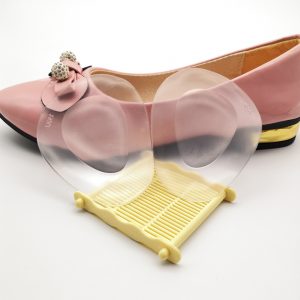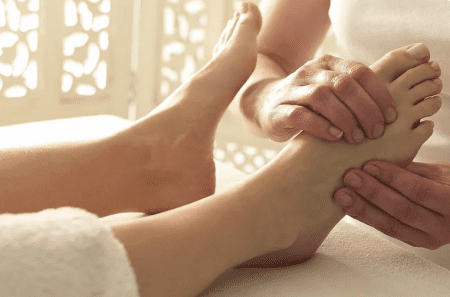Sneaker styles are constantly evolving both in the way they look and in how they function. Navigating through all the sneaker brands and various styles, including those with high-tech features, can be confusing.
Athletes and sports medicine experts tend to stay current with athletic shoe features and how each one can benefit a specific foot type or activity. But athletes aren’t the only ones who can benefit from finding the right shoe for their foot type or activity level. For any activity level, it helps to know how a certain shoe style or feature can support your feet.
How to Shop Smart for Athletic Shoes
The most important aspect to consider when buying athletic shoes is the fit of the shoe, followed by the degree of support or stability you need. Generally, it’s best to purchase shoes at the end of the day to mimic the natural swelling that occurs in your feet when exercising.
If you have flat feet or your feet overpronate (in which the arch and ankle roll inward and the foot splays outward while walking), if you have a tendency toward plantar fasciitis (inflammation of the fibrous band of tissue of the sole of the
foot that causes heel or arch pain), or if you suffer from arthritis affecting the lower limbs, shoes with a higher degree of stability will usually feel better, as opposed to neutral or minimalist styles.
If you have a normal arch and don’t have any foot or knee problems, shoes with extra support or stability features may not be necessary—unless you prefer them. The intensity of your activity should also factor into your choice of athletic shoes. For example, if you regularly walk or run on rough terrain, a shoe with a rugged sole—such as a trail-running shoe—would be a good choice.
Minimalist Shoes
For years, athletic shoe styles have evolved toward providing more support, especially as running and other high-impact sports have gained popularity. Just as superthick-soled sneakers and toning shoes like Skechers Shape Ups started to lose popularity, in came the minimalist styles.
The minimalist shoe craze was born out of the increased interest in barefoot running. Barefoot running can literally mean running shoeless, or it can refer to running in a minimalist shoe style, popularized by the glove-like Vibram FiveFingers shoe.
Minimalist shoes have a thin sole, with little to no change in height from heel to toe. The shoe can easily be flexed and some styles, such as Nike’s Free Run and Flex Run, have deep grooves in the sole to allow for extra flexion. This will allow the mid foot and toes to flex more, which can be a problem if you have a painful toe condition, such as a bunion.
When asked why they opt for barefoot running or minimalist shoes, people will often say they prefer to experience more natural foot and body biomechanics. For example, running in a minimalist shoe, which has less support than a traditional running shoe, makes the muscles of the feet and lower leg work a little harder to maintain foot stability and reduce ground impact.
In theory, this strengthening can have the effect of decreased foot problems, such as hammertoes (toes with an abnormal bend at the middle joint) or plantar fasciitis.
One problem with this concept is that adult feet have already taken shape as flat (overpronating), high arched (supinating), or neutral arched. This is why people with flat feet often don’t feel comfortable in or have problems wearing minimalist shoes.
So if you are an overpronator and want to try minimalist shoes—break them in very gradually to avoid injury, but be aware that these styles may not be your best fit. Some people with arthritis or tendonitis also find they do better in athletic shoes with more support, rather than a minimalist shoe.
Shoes for Maximum Support and Motion Control
If you have a specific foot problem such as arthritis, tendonitis, or plantar fasciitis, or you are an overpronator, then sneakers with motion control are best. How do you know if a shoe has motion control? One visible feature is the mid part of the shoe’s sole, which will have an elevation or arch that has a hard plastic shell.
This feature appears to separate the heel from the forefoot area of the shoe. Motion control gives the shoe a higher degree of stability, which resists foot pronation. Excessive pronation can lead to problems such as tendonitis, plantar fasciitis, and knee problems.
Stability Shoes
Stability athletic shoes are simply sneakers that offer good support but have less control over foot motion than a motion control shoe does. A stability shoe would be a good choice for feet that don’t overpronate or require extra support. They are usually preferred by anyone who likes a little flexibility in their shoes rather than rigid, stiff-soled styles. New Balance, Adidas, and Nike are three companies that use the term “stability” in their shoe categories.
Cushioned Shoes
Cushioned shoe styles are meant to accommodate those who prefer shoes that absorb shock. They are less rigid and have less control than other styles, so they may be easier to flex in half or twist. These may not be the best choice for overpronators or anyone with any kind of foot or ankle instability issues.
People who have rigid, high-arched feet may find these styles more comfortable. If you have a tendency to sprain your ankles, be aware that a thicker, narrower sole may increase the risk of a sprain. This was a common problem with curved toning shoes, which offered a lot of cushioning, but increased instability in the foot and ankle.
Finding Athletic Shoes by Category
It is common for athletic shoe websites to categorize their shoe styles by the level of support, and some offer advice on which shoe is best for a specific foot type or activity. Some companies even have unique terms for categorizing their shoes. You may find these suggestions helpful in finding just the shoe that will work for your foot type.









